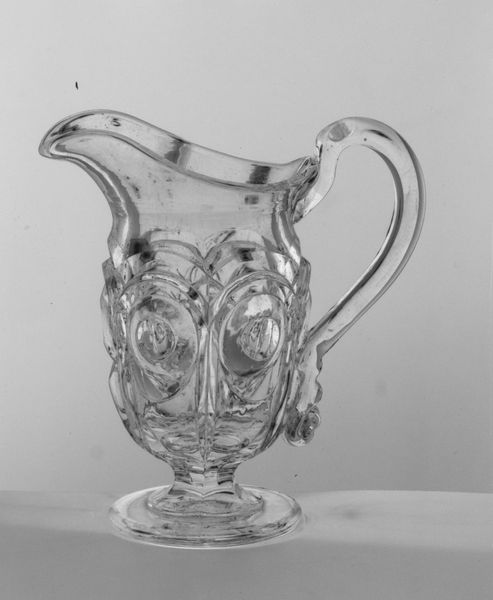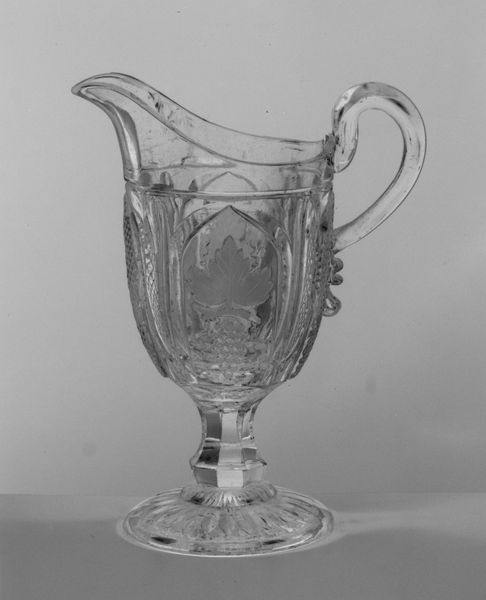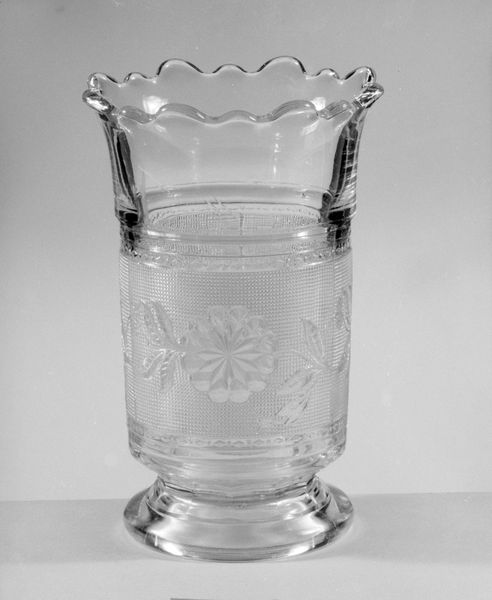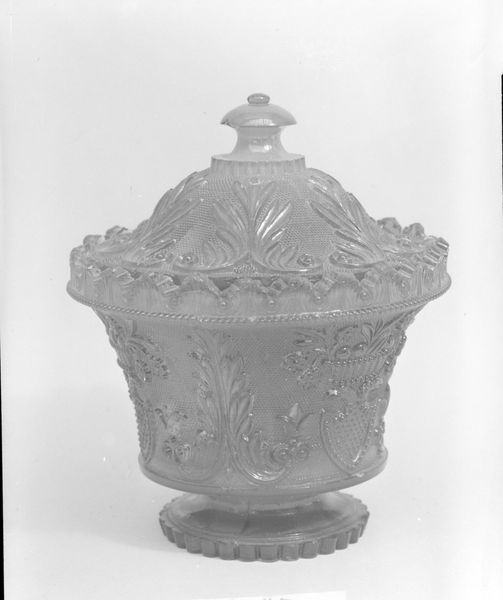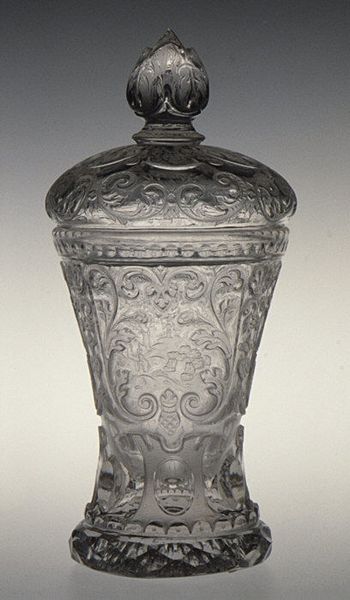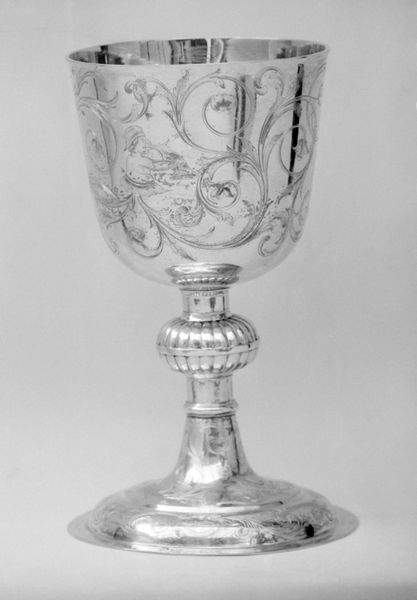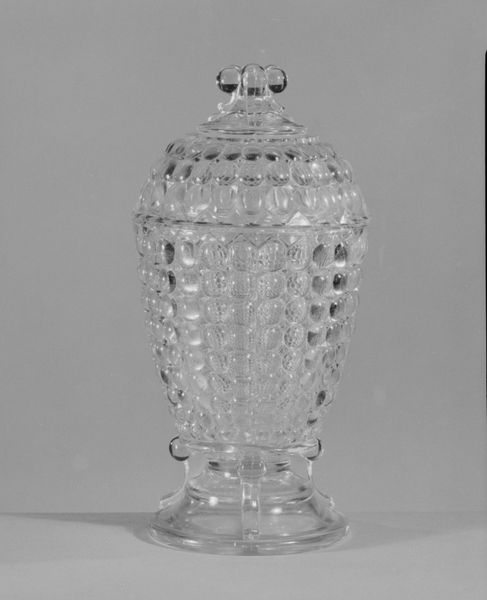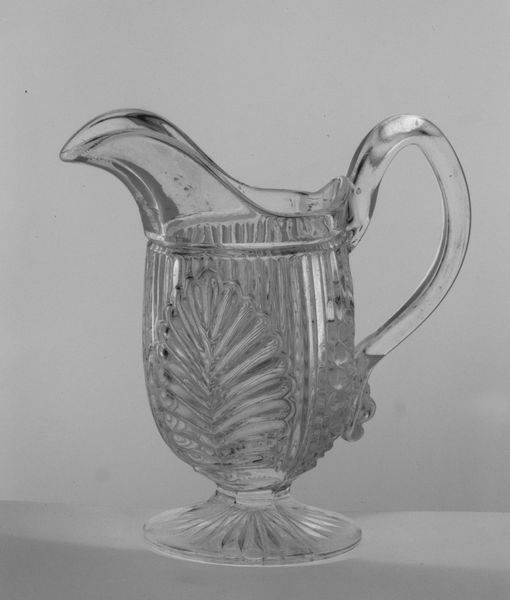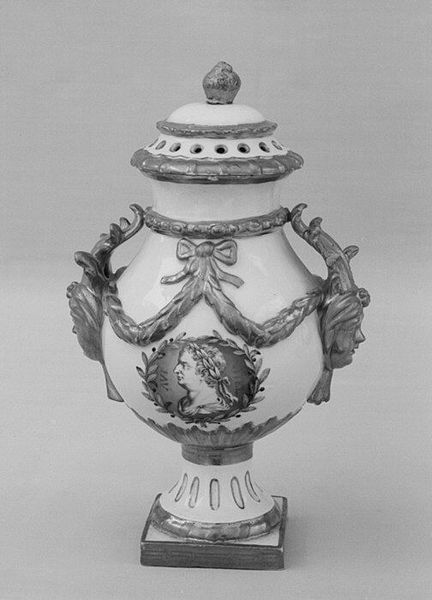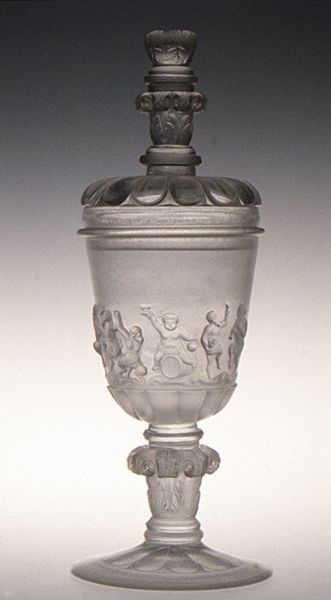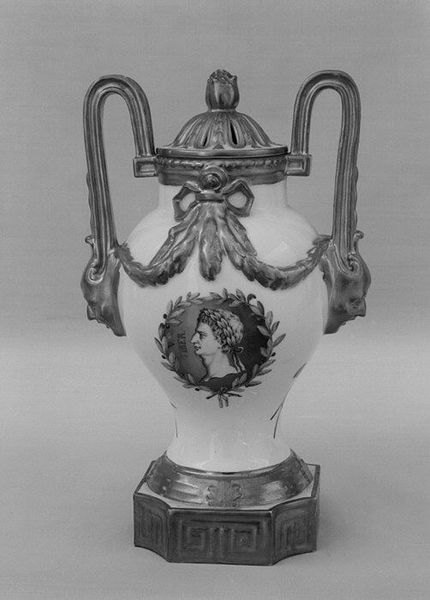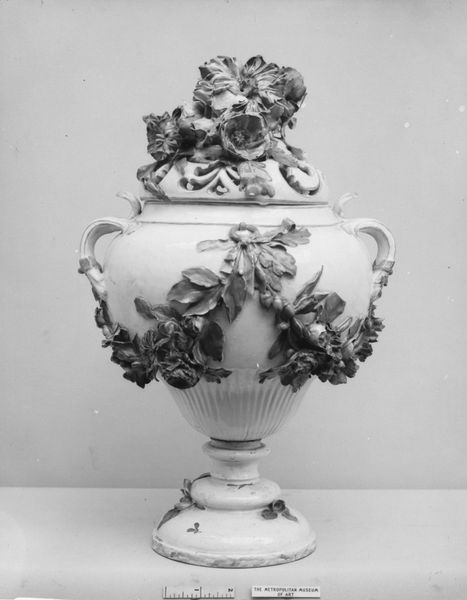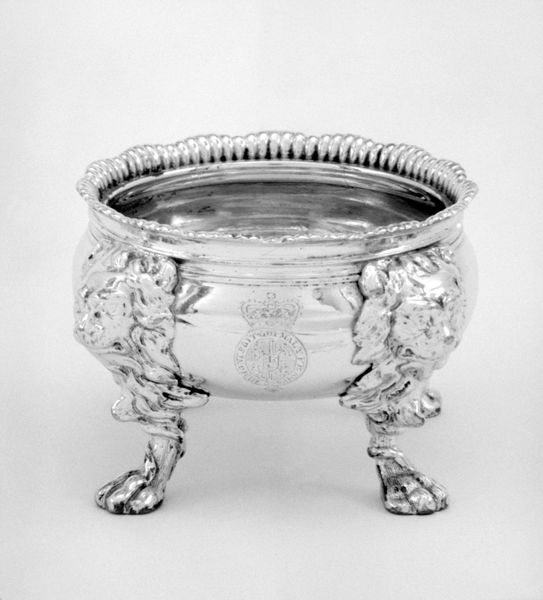
glass, sculpture
#
glass
#
sculpture
#
decorative-art
Dimensions: H. 6 3/4 in. (17.1 cm)
Copyright: Public Domain
Editor: Right, let's talk about this curious "Covered Owl Jar," made around 1880-1890 by Atterbury and Company. It's a glass sculpture, and I’m really intrigued by its... novel form. It's kind of unsettling but also amusing. What jumps out at you when you look at this piece? Curator: I find it interesting to consider this object within the context of late 19th-century American decorative arts. Owl imagery gained considerable traction during this period, fueled partly by the broader interest in natural history and a rising middle class seeking refined, yet quirky, household objects. To whom did Atterbury and Company cater, and what values did owl imagery represent for them? Editor: So, not just a decorative item but maybe a symbol of something bigger in society at the time? What could the owl symbolize? Curator: Precisely. Owls, historically associated with wisdom and watchfulness, were re-interpreted. They became associated with notions of intellectualism but also domesticity. They found their place within middle class parlors. Considering the time period, you must also reflect on labor conditions, industrialization, and how those impacted this type of mass-produced glass art. What would be its place in homes? How does its existence both reflect and perpetuate the politics of the day? Editor: I never would have thought about it that way! It’s amazing how much you can unpack from just one, seemingly simple, glass jar. Curator: That's precisely why objects like these are so captivating. They reflect a multitude of intersecting social and cultural narratives. I’m glad you gained some perspective on these beautiful objects. Editor: Thanks! I'll definitely see decorative art with new eyes from now on!
Comments
No comments
Be the first to comment and join the conversation on the ultimate creative platform.
